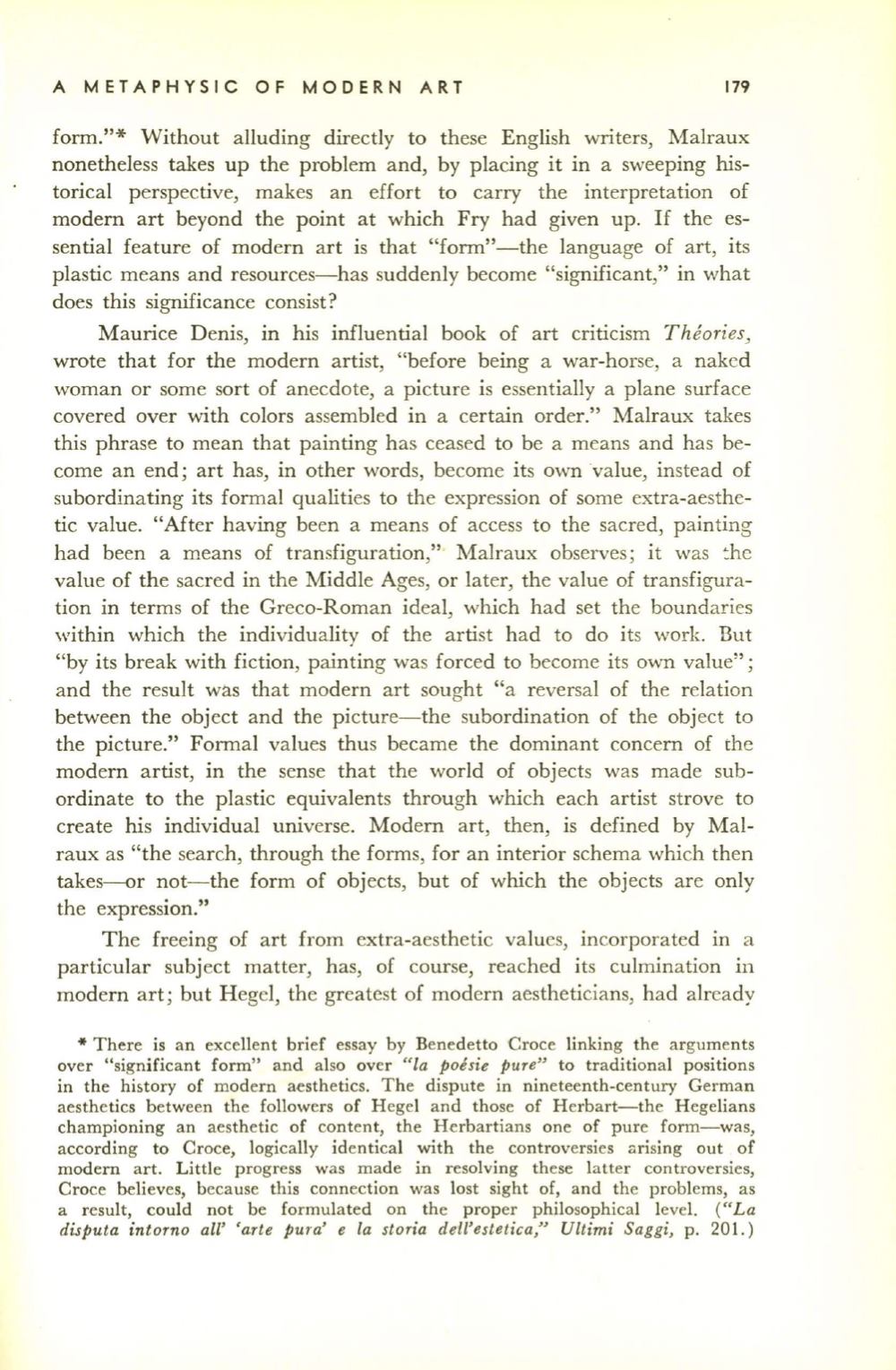
A METAPHYSIC OF MODERN ART
179
form."* Without alluding directly to these English writers, Malraux
nonetheless takes up the problem and, by placing it in a sweeping his–
torical perspective, makes an effort to carry the interpretation of
modern art beyond the point at which Fry had given up.
If
the es–
sential feature of modern art is that "form"-the language of art, its
plastic means and resources-has suddenly become "significant," in what
does this significance consist?
Maurice Denis, in his influential book of art criticism
Theories,
wrote that for the modern artist, "before being a war-horse, a naked
woman or some sort of anecdote, a picture is essentially a plane surface
covered over with colors assembled in a certain order." Malraux takes
this phrase to mean that painting has ceased to be a means and has be–
come an end; art has, in other words, become its own ·value, instead of
subordinating its formal qualities to the expression of some extra-aesthe–
tic value. "After having been a means of access to the sacred, painting
had been a means of transfiguration," Malraux observes; it was :he
value of the sacred in the Middle Ages, or later, the value of transfigura–
tion in terms of the Greco-Roman ideal, which had set the boundaries
within which the individuality of the artist had to do its work. But
"by its break with fiction, painting was forced to become its own value" ;
and the result was that modern art sought "a reversal of the relation
between the object and the picture-the subordination of the object to
the picture." Formal values thus became the dominant concern of [he
modern artist, in the sense that the world of objects was made sub–
ordinate to the plastic equivalents through which each artist strove to
create his individual universe. Modern art, then, is defined by Mal–
raux as "the search, through the forms, for an interior schema which then
takes--or not-the form of objects, but of which the objects are only
the expression."
The freeing of art from extra-aesthetic values, incorporated in a
particular subject matter, has, of course, reached its culmination in
modern art; but Hegel, the greatest of modern aestheticians, had already
*
There is an excellent brief essay by Benedetto Croce linking the arguments
over "significant form" and also over
"la poesie pure"
to traditional positions
in the
hi~tory
of modern aesthetics. The dispute in nineteenth-century German
aesthetics between the followers of H egel and those of H erbart-the Hegelians
championing an aesthetic of content, the Herbartians one of pure form-was,
according to Croce, logically identical with the controversies arising out of
modern art. Little progress was made in resolving these latter controversies,
Croce believes, because this connection was lost sight of, and the problems, as
a result, could not be formulated on the proper philosophical level.
("La
disputa intorno all' 'arte pura' e la storia dell'estetica," Ultimi Saggi,
p.
201.)


